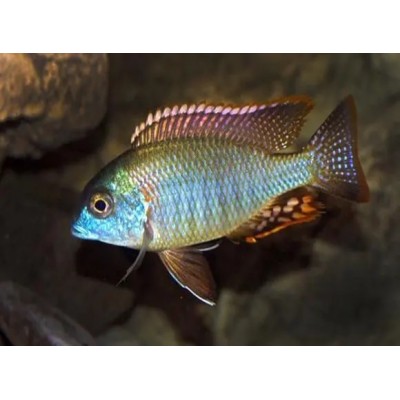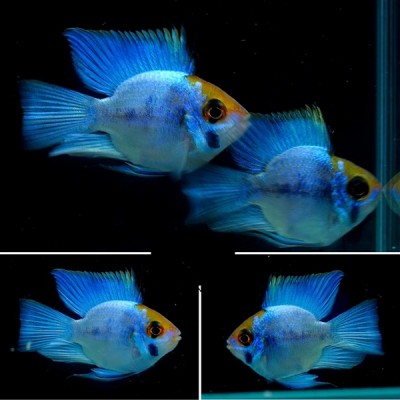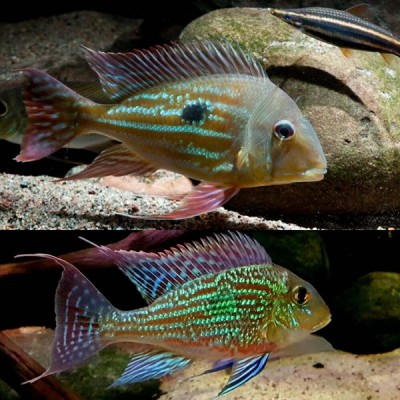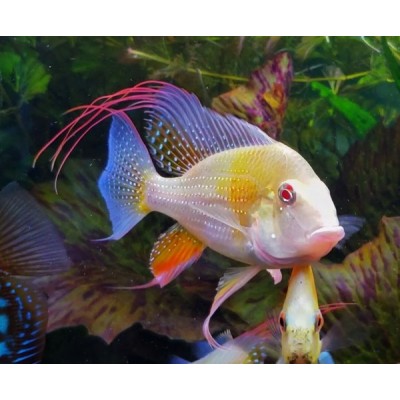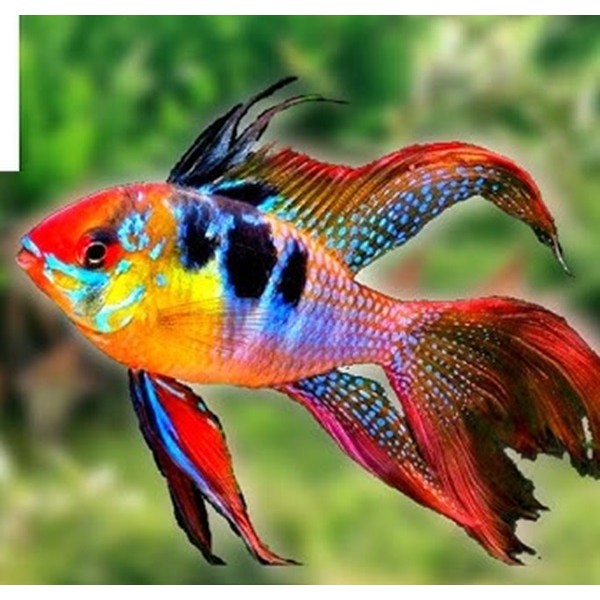
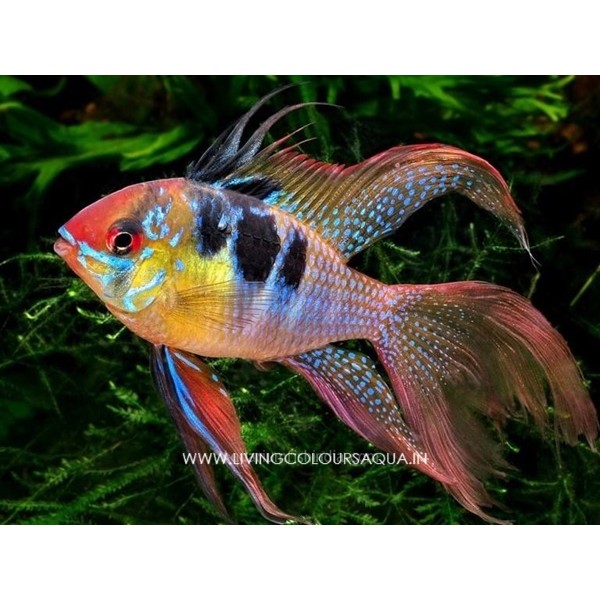


Origin and Distribution
Like many other Cichlid Species, the German Blue Ram or Ram Cichlid is native to South America. This species is found in the Orinoco River basin in both Venezuela and Colombia. It has been bred successfully in captivity for many years, protecting wild populations.
Colours and Markings
The German Blue Ram is distinctive with its vivid blue accents. The base colour of the body is gold/silver, with black markings over the head, cranial dorsal fin, and spots on the dorsal side-body. The fins may be slightly red or orange at their tips. The entire body is highlighted by vibrant patches of reflective electric blue, giving this fish its name.
Tankmates
Unlike many other cichlid species, the German Blue Ram is a relatively peaceful fish, and therefore not well suited to many combination cichlid species tank. Provided their water quality parameters match, the German Blue Ram can be kept with many other compatible community aquarium fish species.
Other potential cichlid companions for the German Blue Ram include the blood parrot cichlid or Krebensis Cichlid. There are many more aggressive cichlid species that are not recommended to be kept with the German Blue Ram.
German Blue Ram Habitat and Care
The German Blue Ram is recommended only for advanced hobbyists due to its finicky water quality requirements and desired habitat. It is critical to maintain good water quality for any fish system, but extra important to keep your German Blue Ram alive and healthy. Stick to a regular maintenance schedule and test your water quality regularly.
In addition to exceptional water quality, this species likes to have plants to swim around, caves to hide in, and if you plan on breeding, flat stones for females to lay their eggs.
Too many plants will hinder your fish's ability to swim freely and not enough caves may lead to unnecessary competition between cave-loving species. It is a delicate balance to create an environment where your fish has room to swim and safely hide.
German Blue Ram Diet and Feeding
Being omnivores and not very picky eaters, a balanced cichlid pellet is the best choice for German Blue Ram. Supplements with frozen, fresh or dried diets are welcome on an occasional basis, but should not make up more than 5-10% of the overall diet. These can be both carnivore and herbivore treats.
Being easygoing fish, there are no specific feeding requirements for the German Blue Ram. As with all community tanks, a broadcast feeding is recommended so all fish get a fair share.
Gender Differences
It is very difficult to differentiate between male and female rams. The males tend to be larger and more colorful, but external variations are not a consistent method of sex differentiation.
For some individuals, if you carefully look at the black spots on the side of your German Blue Ram, the males will not have any blue coloration in their black spots, whereas the females will. The males also tend to have an elongated dorsal fin. However, these are not guaranteed methods of sex determination.
Breeding the German Blue Ram
It is highly suggested that all attempts at fish breeding occur in a separate breeding tank. This will allow for slight variations in water quality and temperature while protecting the newly hatched fry.
The German Blue Ram prefers to breed in slightly acidic (5.5-6.5), soft water, and slowly increase the temperature to the top of the range (82F or 28C). Breeding has high metabolic requirements, so make sure your fish are well fed prior to moving them into their new surroundings.
Once you have an established male-female pair of German Blue Rams, they will tend to school together. They will require a flat rock on which the female will lay her eggs, then the male will follow behind to fertilize them. The parents will take turns guarding the eggs and newly hatched fry.
- Stock: 13
- Model: MICROGEOPHAGUS RAMIREZI
- SKU: F3

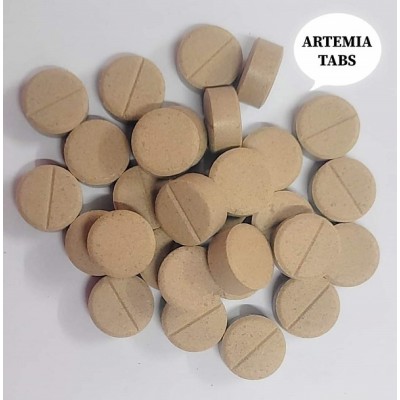


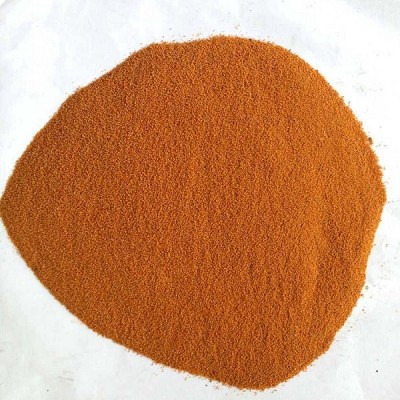
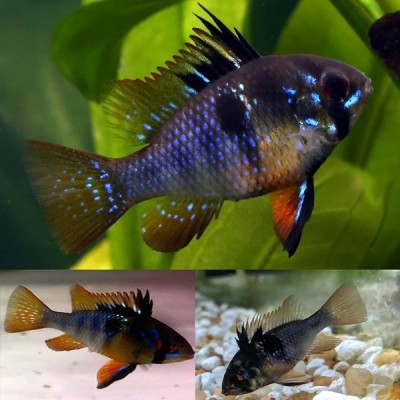
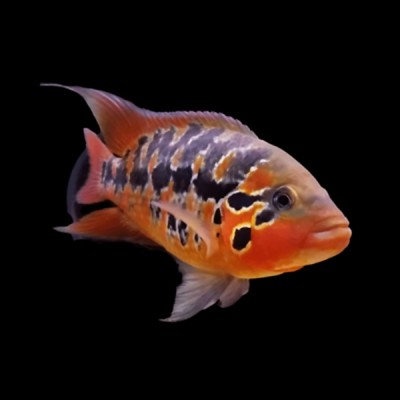
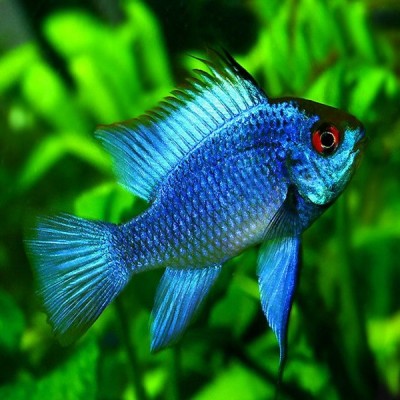
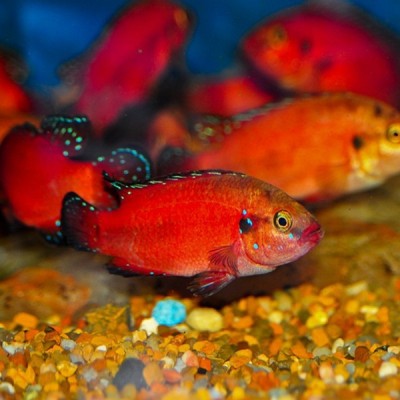
-400x400.jpg)
